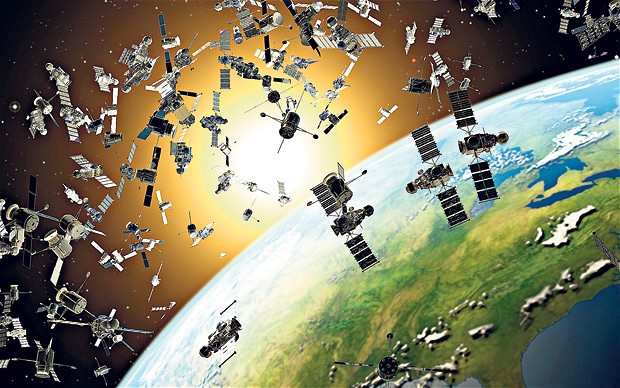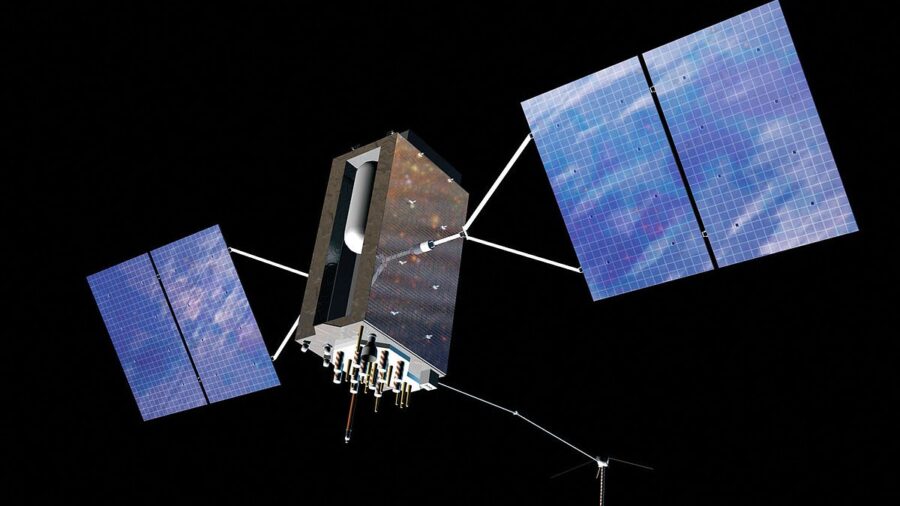Space Junk Is Starting To Wash Up On Beaches
Plenty of stuff washes up on beaches, but it’s not every day you see a massive hunk of space junk …
Continue reading "Space Junk Is Starting To Wash Up On Beaches"

Plenty of stuff washes up on beaches, but it’s not every day you see a massive hunk of space junk wash ashore. Except that’s exactly what happened in Western Australia this week when a strange, cylindrical object ended up on a beach in Green Head near Jurien Bay. The Australian Space Agency tweeted about the object, saying that it could be “a foreign space launch vehicle” and that the agency is working with other global agencies to determine its origin.
An unidentified object, believed to be space junk, washed up on a beach in Australia.
The Australian Space Agency continued the threat, cautioning people to avoid handling the space junk since its origin is currently unconfirmed. CNN reported that the junk is taller than a human and that it is covered in barnacles, so it’s probable that the object had been at sea for a while before it ended up on the Australian beach.
People have been speculating as to what the object could be, with Alice Gorman, a space archaeologist from Flinders University in Adelaide, suggesting that it is likely a third phase of a polar satellite launch vehicle launched by India.
While this theory is unconfirmed, Gorman mentioned that the materials and dimensions are identical to launch vehicles that India has used since 2010. Gorman also suggested that the object likely never made the journey to outer space, as it is mostly intact and was likely detached as part of the multi-stage rocket launch.
It’s common for this type of debris to fall to Earth, and the space junk could have spent years at sea before it eventually washed ashore.
While local police initially took precautions when the space junk was found, a report by the Department of Fire and Emergency Service and Chemistry Centre of Western Australia announced that the object appears to be safe and posed no threat to the community.
Alice Gorman, a space archaeologist from Flinders University in Adelaide, suggesting that it is likely a third phase of a polar satellite launch vehicle launched by India.
Gorman corroborated this report, saying that if it is a third-phase cylinder from a launcher, it would run on solid fuel, which would only release toxins if it reached high temperatures. Still, it’s generally recommended that people just leave it alone until its origin is confirmed and it can be safely removed from the beach.
Space junk being dumped in the ocean certainly isn’t a new concept, as NASA even has an oceanic graveyard called Point Nemo, where it has been sending space debris since 1971. Located between Antarctica and South America, this location was chosen to be as isolated and as far from humans as possible.

There is also an orbital graveyard, though that is getting a little crowded, and dumping debris at Point Nemo may actually be the better and more sustainable option.
It’s common for this type of debris to fall to Earth, and the space junk could have spent years at sea before it eventually washed ashore.
The United States, Russia, Japan, and other space agencies also send their space junk to Point Nemo, and fewer than 300 objects have been dumped there at this point. There is also a fairly low environmental impact, as Point Nemo has very little natural life. When the International Space Station is eventually decommissioned, Point Nemo is also set to serve as its grave.
So, it is pretty rare for space junk to wash ashore. This is certainly an incident that doesn’t happen too often since most agencies have designated debris dumping spots. It’ll be interesting to get an official report on what this thing actually is.












